PROTECT YOUR DNA WITH QUANTUM TECHNOLOGY
Orgo-Life the new way to the future Advertising by AdpathwayThe right Tour Divide bike can make a huge difference in a rider’s performance across this 4,317 km (2,682 mi) self-supported off-road epic. Traversing the full length of the Rocky Mountains from Canada to Mexico, and packing in over 48,000 metres (158,000 feet) of climbing, the route is one of the most demanding endurance challenges on Earth.
Once the grand depart begins, the clock doesn’t stop until riders reach the finish line. The fastest competitors complete the route in just 13 days, averaging a staggering 334 km (207 miles) per day.
This event is especially fascinating from a gear optimisation standpoint. Small adjustments to Tour Divide bike setups can translate into time savings of hours or even days.
 Taking on the Tour Divide with a singlespeed adds an extra challenge. Image: Justin McKinley
Taking on the Tour Divide with a singlespeed adds an extra challenge. Image: Justin McKinley As with my previous articles, I’ll be analysing 163 different bike setups from this year’s Tour Divide. But this time, I’m also diving into the fastest bikes ever to complete the route.
A big thanks to BIKEPACKING.com for compiling much of the data I reference throughout. Links: Part One and Part Two).
Let’s begin with a quick look at some of the most dialled-in bikes from recent record-setting rides.
The Fastest Tour Divide Bike Setups
Justinas Leveika set a new course record last year aboard a Trek Supercaliber mountain bike. His setup featured flat handlebars, full suspension, 29″ wheels, 2.2″ tyres, and aero bars.
Close behind him was Ulrich Bartholmoes, who recorded the second-fastest time on the 2024 Tour Divide. He rode a BMC Twostroke mountain bike with a nearly identical build, though he opted for drop bars instead of flat.
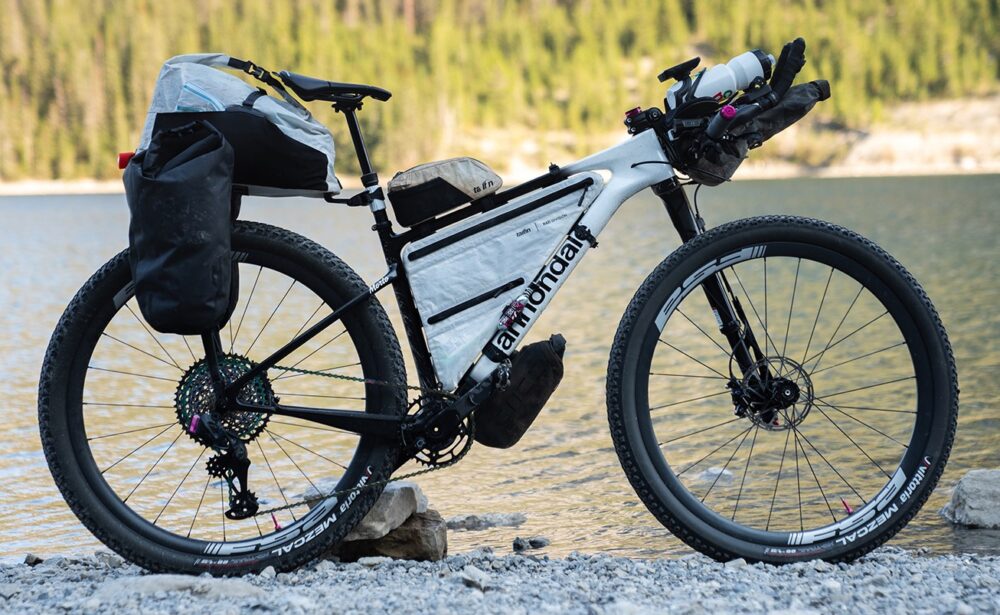 Lachlan set the fastest known time down the Tour Divide route on this Cannondale. Image: EF Education-EasyPost
Lachlan set the fastest known time down the Tour Divide route on this Cannondale. Image: EF Education-EasyPostAnd finally, Lachlan Morton recently completed an individual time trial (ITT) on the Tour Divide route, finishing a remarkable 14 hours faster than Justinas. He rode a Cannondale Scalpel mountain bike equipped with flat bars, a suspension fork, 29″ wheels, 2.35″ tyres, and aero bars. You can take a closer look at his setup HERE.
Now that we’ve seen what some of the fastest riders are using, let’s dive into the gear choices for this year’s Tour Divide field.
Handlebars on Tour Divide Bikes
 Flat bars are gaining in popularity amongst Tour Divide bikes. Image: Dillen Maurer
Flat bars are gaining in popularity amongst Tour Divide bikes. Image: Dillen Maurer- Flat Bars – 56.4%
- Drop Bars – 43.6%
Handlebar choice is an interesting place to begin, with this year’s riders almost evenly split – 44% using drop bars and 56% opting for flat bars. This divide is mirrored in the setups of the top 10 finishers from last year.
Flat bars are often favoured for their superior control in muddy, snowy, or rough terrain. But given the sheer length of the Tour Divide, comfort tends to be the main deciding factor when it comes to handlebar selection. Some people are more comfortable with drop bars, others a more comfortable with flat bars.
A more critical component on a Tour Divide bike, however, is the addition of aero bars.
Aero Bars
 Very few people take on the Tour Divide with aero bars. Image: Quinda Verhuel
Very few people take on the Tour Divide with aero bars. Image: Quinda Verhuel- Aero Bars – 87.7%
- No Aero Bars – 12.3%
Aero bars are a key feature on Tour Divide bikes, boosting both speed and comfort. By reducing your frontal area, they make your position more aerodynamic, helping you ride faster with less effort.
But perhaps more importantly, they offer an alternative riding position, giving your body a much-needed break during ultra-distance efforts. This is why they appear on 88% of bikes this year, and were used by all of last year’s top 10 finishers.
Riding in the aero position gives different parts of your body a rest by shifting pressure away from your arms, wrists, hands, and saddle. It also allows you to stretch your back and engage different muscle groups, which can make a big difference over back-to-back 15-hour days in the saddle.
Interestingly, most setups aren’t optimised purely for speed. Aero bars are typically mounted high and often tilted back. Some riders even stack 70mm of spacers under their aero bars to maximise the comfort.
To dial things in further, many riders move the arm pads closer to their torso. This is sometimes achieved with a Fred Bar mounted to the steerer, or with aero bars that allow the armrests to slide back along the extensions.
One interesting stat from this year’s Tour Divide: just 4% of drop bar bikes skipped aero bars, compared to 19% of flat bar bikes. It’s hard to say exactly why there’s such a discrepancy, but one possible explanation is that drop bar riders may already prioritise varied hand positions – after all, that’s often the main reason to choose drop bars in the first place.
If you want to go further down the aero bar rabbit hole, I have a detailed article HERE.
Tour Divide Bike Saddles
 3D-printed saddles are part of the latest wave of Tour Divide tech. Image: Max Riese
3D-printed saddles are part of the latest wave of Tour Divide tech. Image: Max Riese- Brooks – 21.5%
- Ergon – 20.2%
- Specialized – 16%
- WTB – 9.8%
- Other Brand – 32.5%
There’s no such thing as a universally perfect saddle. Comfort depends heavily on your riding position, core strength, sit bone width, soft tissue sensitivity, and more. That said, four brands account for nearly 70% of the saddles seen on Tour Divide bikes.
Brooks and Ergon are the top choices, each representing 20 to 22% of setups. Brooks saddles are known for their flexible tops that move subtly with your body, offering excellent comfort if the shape suits you. Ergon saddles are also widely favoured for their ergonomic profiles and supportive, responsive foam. Specialized also deserves a mention, as their saddle shapes consistently earn praise for comfort and support over long distances.
3D-printed saddles are gaining momentum, and we can expect to see many more in the coming years. These saddles use a liquid polymer that’s printed into a honeycomb structure, designed to better distribute pressure and absorb vibrations from rough terrain. Some models even allow for custom asymmetrical padding, offering added support where needed and more flexibility where it’s not.
Suspension Seatposts
 Joe uses a Redshift ShockStop suspension seatpost on his Sufur Tour Divide bike. Image: Joe Nation
Joe uses a Redshift ShockStop suspension seatpost on his Sufur Tour Divide bike. Image: Joe Nation- Rigid Seatpost – 75.5%
- Suspension Seatpost – 24.5%
Suspension seatposts are an excellent upgrade for boosting ride comfort, especially on multi-week events like the Tour Divide. They help absorb both harsh impacts and persistent micro-vibrations. Most riders who try one find the ~200g weight penalty more than justified by the added comfort.
Back in 2022, just 13% of riders used a suspension seatpost (including models like the carbon Ergon Allroad Pro). That figure has now risen to over 24%.
Interestingly, suspension seatposts are nearly three times more common on drop bar bikes – 38% of setups use one, compared to just 14% of flat bar bikes. This difference likely comes down to frame geometry: drop bar bikes typically have longer seat tubes, which leave less of the seatpost exposed. With a shorter extension, rigid posts can’t flex as much, so a suspension post becomes a more effective way to smooth out the ride.
My current favourite is the Redshift ShockStop PRO Endurance, which combines both a coil spring and an elastomer spring. This seatpost offers quick yet controlled movement, meaning it absorbs impacts without feeling overly bouncy. In our vibration lab tests, it reduced impact forces by 30% after a major hit and cut vibration levels by 20% on rough gravel terrain.
Tour Divide Bike Tyre Choice
 The Vittoria Mezcal tyres are still unbelievably popular for the Tour Divide. Image: Jeremiah Bain
The Vittoria Mezcal tyres are still unbelievably popular for the Tour Divide. Image: Jeremiah Bain- Vittoria – 47.9%
- Continental – 25.8%
- Maxxis – 9.8%
- Rene Herse – 6.7%
Tyres are a critical component to optimise over a 4,300 km ride, as they need to strike the right balance between durability and rolling efficiency.
This year, the average tyre width among participants is 2.25″ – the same as last year’s top 10 finishers. However, tyre width alone doesn’t dictate rolling speed. The real performance gains come from the rubber compound and sidewall construction.
The most widely used tyre this year is the Vittoria Mezcal, fitted to 46% of bikes. In second place is the Continental Race King (now rebranded as the Dubnital), which appears on 26% of setups.
While Vittoria tyres have maintained their popularity year-on-year, Continental tyres have seen a significant rise – they’re now twice as popular as they were last year.
One reason for the shift toward Continental tyres is their slight edge in rolling efficiency. According to John Karrasch’s gravel tyre rolling resistance tests, the Race King and Dubnital models appear to roll marginally faster than similar Vittoria tyres – likely in the range of one to five watts per pair, thanks to their advanced rubber compound and sidewall design.
This speed isn’t just theoretical: Justinas Leveika used Race Kings to set the current course record, and the late Mike Hall rode them during his previous record-setting ride.
Quantifying the time savings over 4,300 km is tricky, given surface variation, rider weight, and power output. But based on estimates (75kg rider, 15kg bike, 140W power), Race Kings could potentially save up to five hours over Mezcals.
However, that speed comes at a cost: Race Kings offer about 25% less puncture resistance through the tread compared to Mezcals. Riders will need to decide whether the reduced durability is worth the gain in efficiency.
Here’s another curious tyre stat: Rene Herse tyres were 10 times more popular among drop bar riders than flat bar riders! One possible explanation is that Rene Herse is better known in the gravel bike world, where drop bars dominate. Since the brand offers very few tyres with off-road tread patterns, perhaps it isn’t as well known to riders who typically only buy mountain bike tyres.
Annnd… back to fast rolling tyres. One way to offset a less sturdy but faster-rolling tyre is by using a high-quality tubeless sealant to bolster puncture protection.
Tubeless Sealant
While I don’t have specific data on what sealants Tour Divide riders are using, I recently compiled and analysed every available puncture test on tubeless sealants – and the results were enlightening.
Looking specifically at MTB-width tyre tests, Orange Seal Regular consistently performed best. It demonstrated exceptional puncture-sealing ability, with minimal air loss across a range of scenarios. Even when faced with a 6mm cut, it lost just 3.2 psi – an impressive result compared to other leading products.
If you’re interested in learning which sealants work best for road and gravel tyres as well, be sure to check out my sealant article, where I break down the results across all disciplines.
Wheel Diameter and Wheel Material
 Large diameter 29″ wheels are easily the most popular choice for a Tour Divide bike. Image: Randy Windle
Large diameter 29″ wheels are easily the most popular choice for a Tour Divide bike. Image: Randy Windle- 29″ Wheels – 96.3%
- 27.5″ Wheels – 2.5%
- 26″ Wheels – 1.2%
Three wheel sizes are in use on the Tour Divide this year: 26″, 27.5″, and 29″.
Among these, 29″ wheels are the top choice, as their larger diameter results in a smaller “angle of attack” when rolling over obstacles. This translates to smoother rolling and a higher average speed, which is why all of the fastest riders opt for 29ers.
Meanwhile, 27.5″ wheels are on the decline, with three times fewer bikes running them this year compared to last year.
When it comes to rim material, 65% of riders are using carbon rims, while 35% stick with aluminium. Carbon rims typically offer a superior strength-to-weight ratio, making them an appealing upgrade for riders looking to save weight without sacrificing durability, assuming it fits within your budget.
Dynamo Hubs
 Dynamo hubs are a great way to stay self-sufficient for your power needs. Image: Cory Ostertag
Dynamo hubs are a great way to stay self-sufficient for your power needs. Image: Cory Ostertag- Dynamo Hub – 60.1%
- Regular Front Hub – 39.9%
Dynamo hubs are a popular feature on Tour Divide bikes, offering a reliable source of power with minimal drag, typically around 5 to 10 watts when charging lights or devices. When not in use, the drag is nearly negligible. They’re a solid choice for those wanting consistent, self-sufficient power.
However, dynamo systems are starting to fall out of favour in ultra racing due to the rapid advancements in battery and lighting technology. With modern batteries offering faster charging and longer runtimes, they’re becoming a compelling marginal gain that more riders are now taking seriously.
For example, you can now get 20,000 mAh battery packs (~60 Wh) that charge fully in under an hour with 100 W input. That’s enough power for two full smartphone charges (~24 Wh) plus up to 19 hours of light at 600 lumens (~36 Wh).
In terms of efficiency, eliminating the drag from a dynamo hub could theoretically save up to 10 hours over the full Tour Divide route (based on a 75kg rider, 15kg bike, and a steady 140W power output). Lachlan Morton opted for high-capacity power banks and battery-powered lights during his record-setting ITT, and roughly 40% of the fastest finishers last year followed suit.
Of course, the actual time savings depend on how much power you’re drawing and the overall efficiency of your setup, but for those aiming for speed, going battery-powered could easily shave off several hours.
Tour Divide Bike Frame Materials
 Titanium bikes remain steady at 27.6% of the field. Image: Jimmy Ashby
Titanium bikes remain steady at 27.6% of the field. Image: Jimmy Ashby- Carbon – 50.9%
- Titanium – 27.6%
- Steel – 16.6%
- Aluminium – 4.9%
Carbon is the most popular frame material, with over half of all riders choosing it. This is followed by titanium at 28%, steel at 17% and aluminium at 5%. Amongst the top riders, 70 to 80% tend to ride carbon bikes.
Carbon frames typically weigh 1.0 to 1.5 kg, while similarly tough titanium frames are closer to 2.0 kg. Steel frames are often 2.5 to 3.0 kg.
To put this weight into perspective, an extra kilogram is likely about 1.5 hours over 4,300km for the average rider (75kg rider, 15kg bike, 140 watts power output). That’s not much time between frame materials.
There’s an interesting divide in frame material preference between flat and drop bar bikes. Over 59% of drop bar setups are built on carbon frames, compared to about 45% of flat bar bikes. Aluminium and steel frames are more commonly seen on flat bar setups, suggesting that these riders may prioritise durability or affordability over minimising weight.
Popular Bike Brands
 The Salsa Cutthroat was once again the most popular Tour Divide bike. Image: Benjamin Hoehn
The Salsa Cutthroat was once again the most popular Tour Divide bike. Image: Benjamin Hoehn - Salsa – 22.7%
- Trek – 8.0%
- Specialized – 6.1%
- Curve – 3.7%
- Otso – 3.1%
- Esker – 3.1%
67 different bike brands are represented on the 2025 Tour Divide.
Salsa Cycles remains the most popular brand on the Tour Divide, making up 23% of all bikes, though that’s a noticeable drop from 39% in 2022. Trek (8%) and Specialized (6%) are the next most common mainstream brands, while adventure-focused niche brands like Curve, Otso, and Esker also feature in the most popular brands to ride.
Despite the decline in Salsa’s overall share, the Salsa Cutthroat continues to dominate as the most popular single bike model, ridden by >15% of participants.
Tour Divide Bike Suspension
 Suspension elements are now quite popular amongst Tour Divide riders. Image: Rogier Van Der Wacht
Suspension elements are now quite popular amongst Tour Divide riders. Image: Rogier Van Der Wacht- Suspension Fork – 63.2%
- Rigid Fork – 36.8%
One of the most significant shifts in recent years has been the growing adoption of suspension forks.
Suspension forks improve control and reduce rider fatigue on the rougher sections of the route. And because modern forks can be locked out for efficiency on smooth surfaces, the main downside is simply the added weight. For the average rider, this extra weight translates to around two additional hours over the full course, an acceptable trade-off for most, given the comfort gains.
Just three years ago, only 30% of Tour Divide riders used a suspension fork. That number climbed to 54% last year, and it’s now reached 63%. The top three finishers from the last two editions all ran suspension forks, as did Lachlan Morton during his record-breaking 12.5-day ITT.
What’s especially interesting is the divide between handlebar types: 75% of flat bar bikes are equipped with suspension forks, compared to just 46.5% of drop bar setups. This likely comes down to the bike type. Many mountain bikes (which are often flat bar) include a suspension fork as standard, while most drop bar bikes are rigid by default.
Drivetrain Choice
 Alex Houchin is riding a geared bike this year. Watch out, everyone. Image: Alex Houchin
Alex Houchin is riding a geared bike this year. Watch out, everyone. Image: Alex Houchin- 1X – 80.4%
- 2X – 4.3%
- 3X – 1.8%
- Singlespeed – 6.1%
- Gearbox/IGH – 7.4%
When it comes to drivetrains, 1X systems dominate among derailleur-equipped bikes, accounting for 93% of setups. That’s not surprising given the Tour Divide’s off-road nature, which demands wide tyres and low gearing – features that are typically found on bikes that come with 1X drivetrains.
SRAM leads the pack as the drivetrain of choice, used by 72% of riders. Interestingly, its popularity is slightly higher on flat bar bikes (77%) compared to drop bar setups (67%). It’s hard to say exactly why, but it could be that SRAM drivetrains are more commonly spec’d on the types of flat bar bikes that fall within the typical Tour Divide budget range.
Gearbox and internal gear hub (IGH) bikes are still rare on the Divide, largely due to their extra weight and higher drivetrain drag. My calculations suggest a gearbox could add anywhere from 7 to 12 hours to a rider’s total time over the 4,300km course, depending on the model.
That said, there are twice as many gearbox/IGH bikes on the start line this year compared to last, showing that some riders are willing to trade outright speed for the simplicity and low maintenance these systems offer.
Another interesting stat: singlespeed flat bar bikes are nine times more common than their drop bar counterparts. One possible explanation is that the wider flat bars give riders more leverage, helping them generate additional torque when grinding slowly up steep climbs.
Last Year’s Tour Divide Bike Video
If you’re curious how this year’s bikes stack up against last year’s, I’ve got you covered – I made a video breaking down the fastest Tour Divide setups from 2024.
Check it out to see what’s changed, what’s stayed the same, and which trends are picking up speed.
Summary
We’ve now built a solid picture of what makes up a fast Tour Divide bike setup. Based on the trends and data, it’s likely we’ll see a growing number of riders adopting suspension forks and suspension seatposts in the future.
Tyre choice and lighting setups also stand out as areas where riders could still gain meaningful time. Opting for faster-rolling tyres and swapping out dynamo lighting for quick-charge batteries and powerful rechargeable lights could, in theory, save some riders an entire day over the course.


 1 month ago
11
1 month ago
11

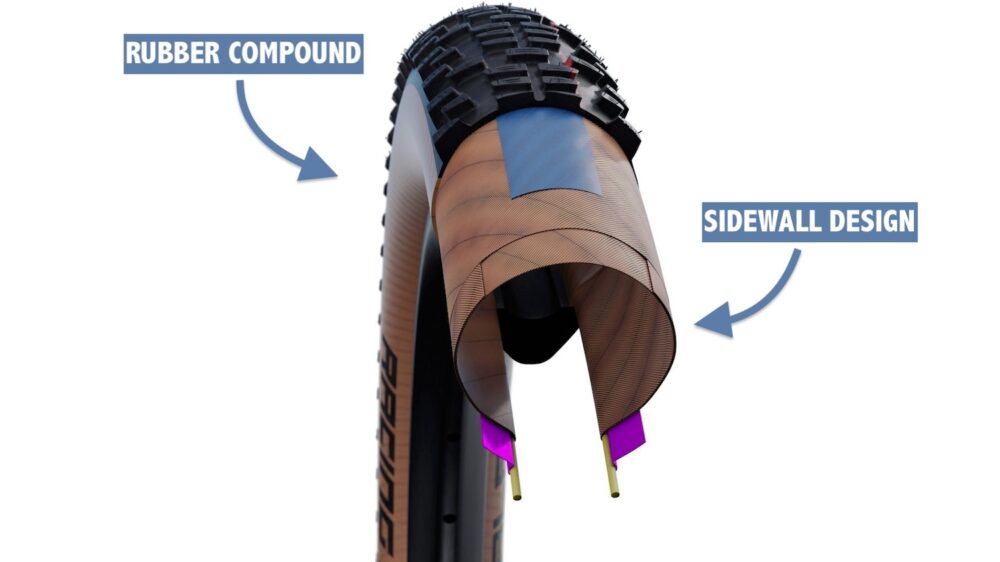

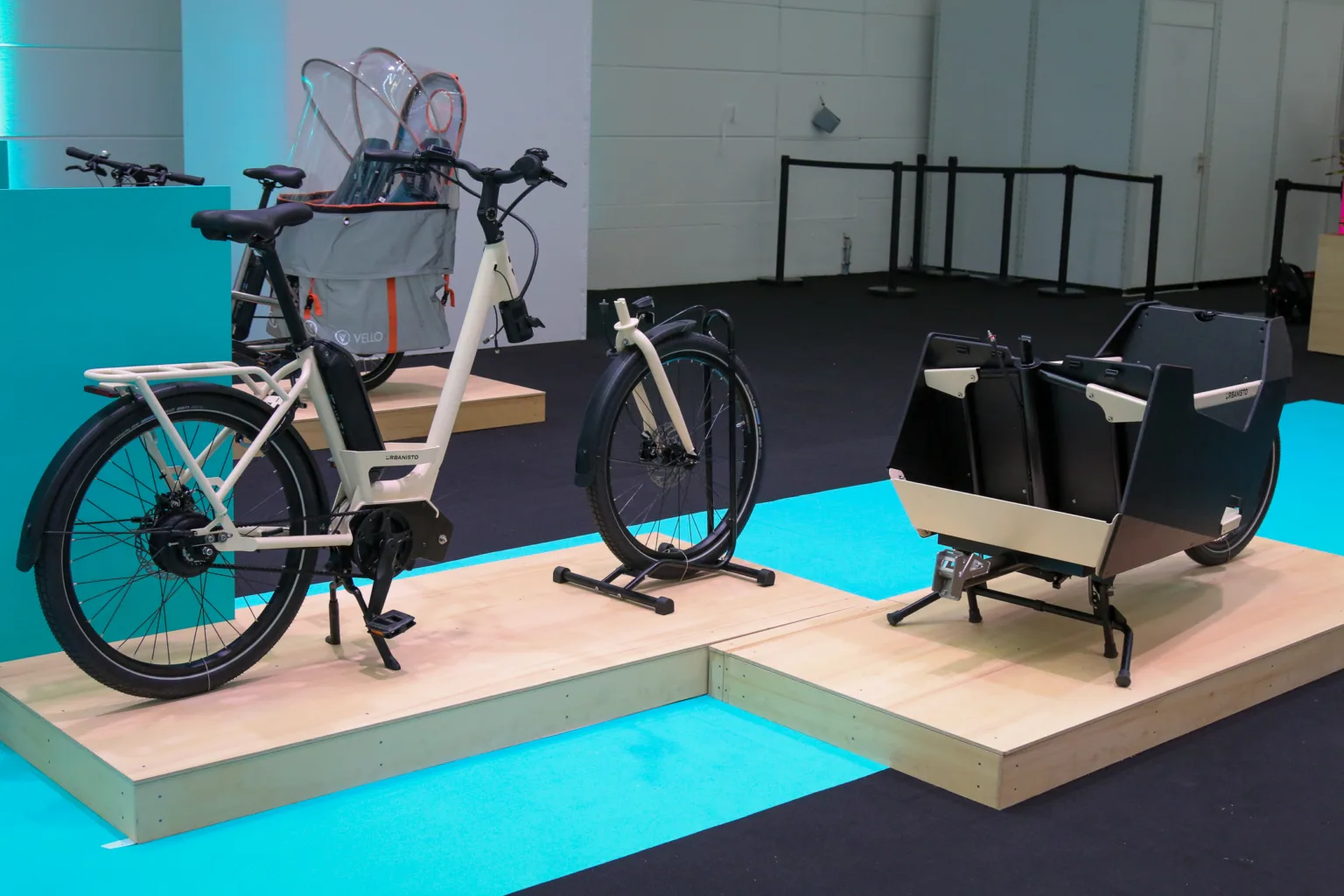

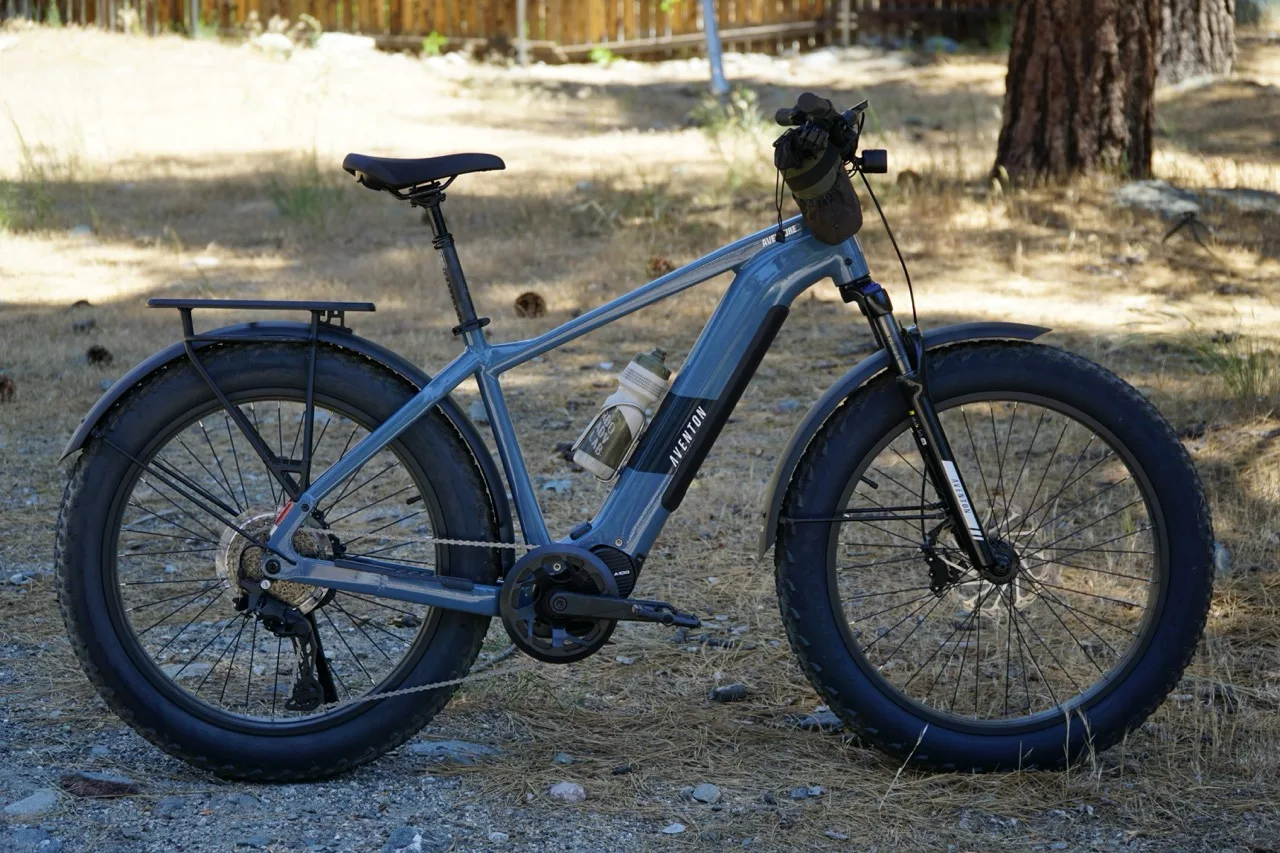
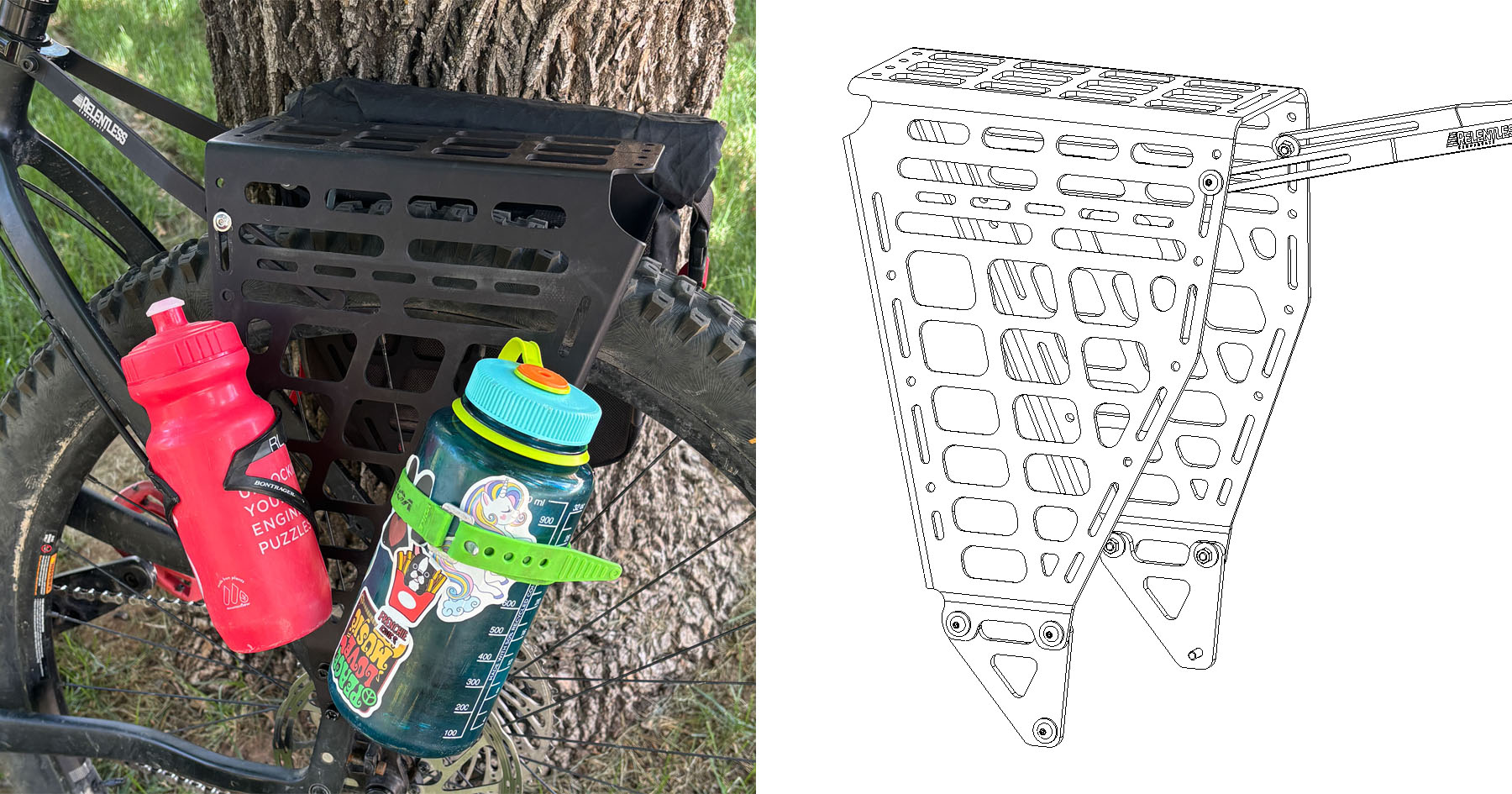
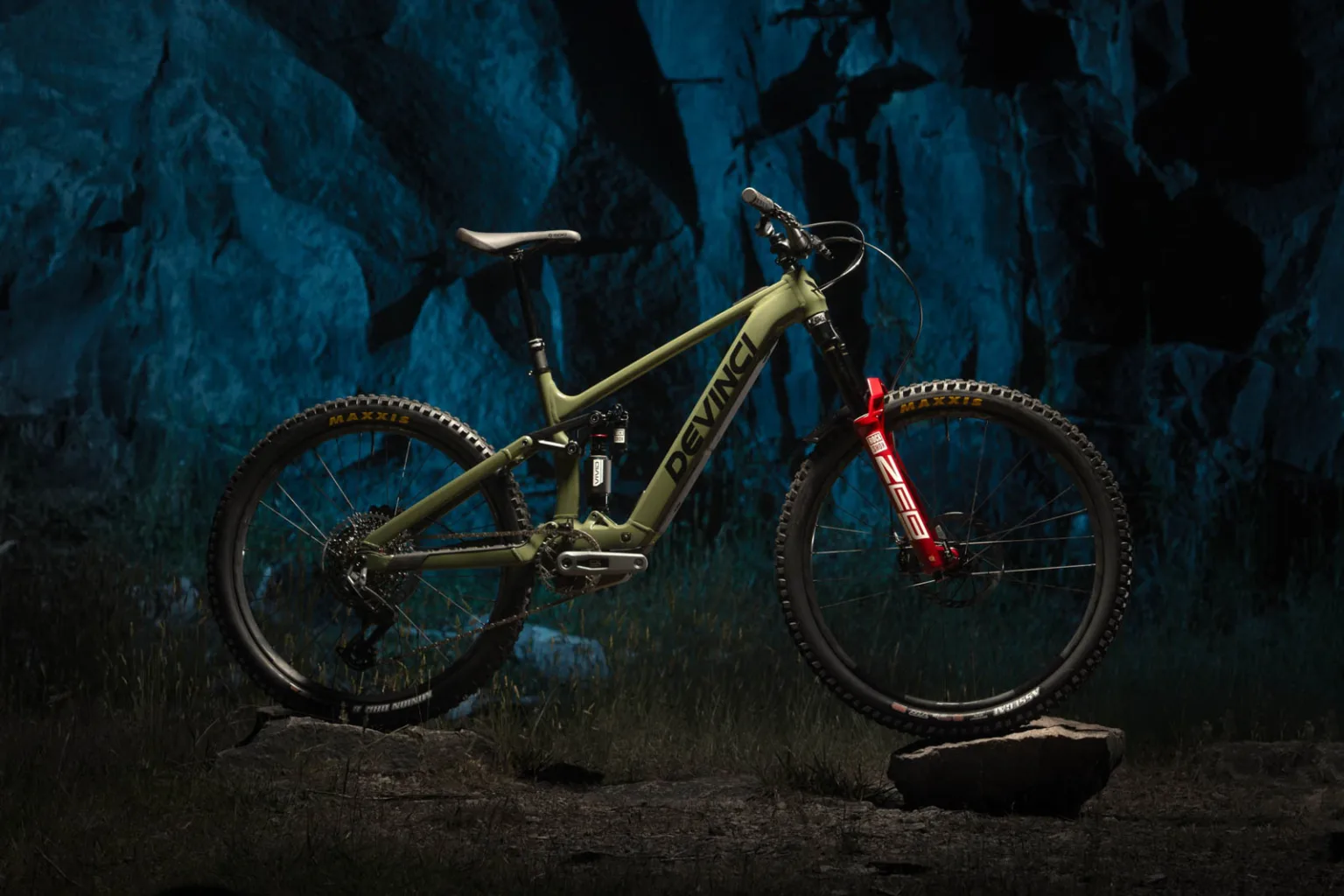




 English (US) ·
English (US) ·  French (CA) ·
French (CA) ·  French (FR) ·
French (FR) ·